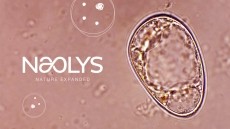Talc supplier and J&J headed to court over cancer

Imery Talc America was not named in the recent case that linked talc to cancer and held Johnson & Johnson accountable to the tune of $72m.
This time, both companies are under scrutiny, as the litigants assert that J&J and Imery knew for quite some time that talc was linked to ovarian cancer and did nothing to warn consumers.
Supply side
Imery supplies J&J with talc mined from the South China province of Guangxi. That company’s site addresses health and safety issues of talc, but only in so far as occupational exposure is concerned. And, Imery attests to following dust exposure guidelines according to region and implies that miners and ingredient handlers along the supply chain are safe.
Bloomberg Businessweek reports that the company’ material safety data sheet (MSDS) that accompanies talc shipments to J&J includes this statement: “Perineal use of the powder is a possible risk factor for ovarian cancer.”
Though as of this morning, the Imery cosmetics industry page made no mention of the suit or any possible consumer risks. It does, however, offer up some promotional text about the ingredient:
“Soft to the touch and chemically inert, talc has been used as a body powder for hundreds of years and is an ideal carriers for perfumes.”
“Imerys talcs provide the silkiness in blushers and eye shadows; the transparency of foundations and the sheen of powder compacts.”
“Soap manufacturers use our talcs as fillers; where they enhance the softness and lather of soaps and syndets and cut formulation costs.”
Consumer mistrust
At issue is a medley of science, negligence, and consumer perception. “Whether or not the science indicates that Baby Powder is a cause of ovarian cancer, Johnson & Johnson has a very significant breach of trust,” Julie Hennessy tells Susan Berfield, Jef Feeley, and Margaret Cronin Fisk of Bloomberg Businessweek.
Hennessy, a marketing professor at Northwestern’s Kellogg School of Management, adds, “In trying to protect this one business, they’ve put the whole J&J brand at risk.”
Consumers are influencing the cosmetics and personal care industries in a more nuanced way. Lucie Greene, worldwide director of JWT Intelligence, has described it this way: we’re seeing the “next generation of conscious consumer,” who is ready to question whether legacy brands and even governments actually have their best interests in mind. The answer scarcely matters, she says. “It’s more about perception than reality.”
And as the Bloomberg Businessweek item points out, J&J has given in to consumer pressure regarding ingredients before, removing chemicals of concern from baby care product. “We’ve been replying with evidence of the science that ensures safety. Now we have to go beyond science and be responsive to our consumers, because it’s really about their peace of mind,” a company spokesperson told Scientific American about that decision.
Up next
This latest trail gets underway Monday 11 April in circuit court. Over 1,000 women and affected families are involved. As a result of these cases, more and more research—industry, academic, and J&J’s own research into any link between caner and talc—is coming to the attention of consumers and popular media.
The industry is watching to see what the courts decide and how J&J responds.
Read more from Cosmetics Design on last month’s ruling, which found Johnson & Johnson liable for fraud, negligence, and conspiracy. And find the recent Bloomberg Businessweek item here.
















